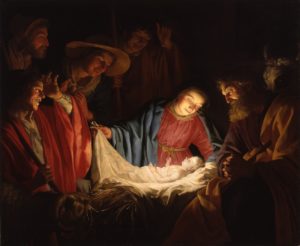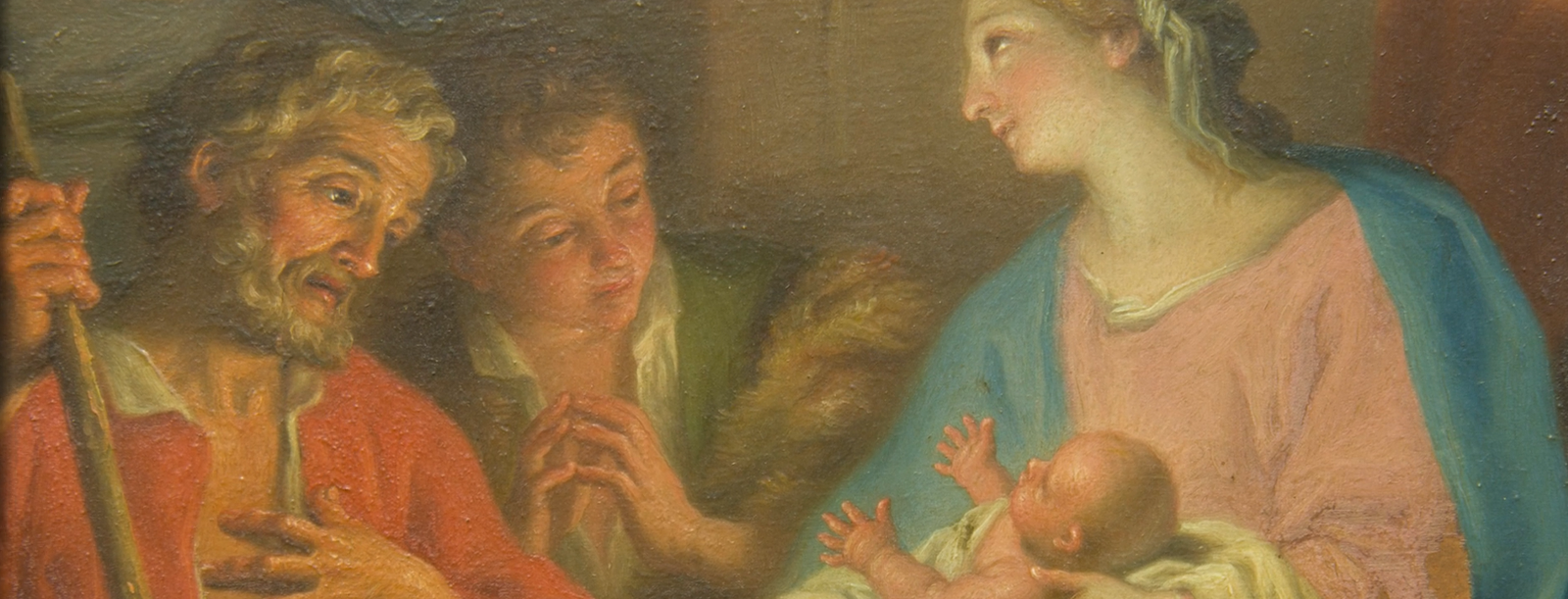Mary Lights Up December
Mary Lights Up December
The word “advent” means “coming” – the coming of Jesus Christ to our world. More than 2,000 years ago, Mary waited to bring Him, the Light of the world, to all people. She knew that to dispel darkness, we needed light. Watch the video to see how she brought a different kind of light to the earth in 1830.
The image above is from The Miraculous Medal Shrine’s Art Museum (Adoration of the Shepherds, after Jacob Calvi, 1740-1815)

Our Church gives us two great Marian feast days this month: the Solemnity of the Immaculate Conception (December 8) and the Feast of Our Lady of Guadalupe (December 12). While these feasts appear to have little in common, if you look closer, you’ll discover a harmonious similarity between them. Both celebrations bring “light” to our world during the dark month of December—and to the darkness everyone has experienced with the pandemic and civil unrest. In a way, that’s the point. Light shines most brightly through darkness.
When you’re in the dark, you can’t see clearly. You stumble. So Mary brings her Son, the Light of the World, to help us see.
The Solemnity of the Immaculate Conception celebrates our Church’s teaching that at the moment of her conception, Mary was free from all sin. She needed to be perfectly pure in order to bear the Divinity—the “Light”—of God within her womb. The early Church Fathers considered Mary a type of the burning bush (Exodus 3:2-3), because she “contained God and was not consumed by the fire of His holiness.”
This Solemnity, then, is about God’s plan to become one of us. It’s about the Incarnation. It’s about His masterpiece, Mary of Nazareth, who needed to be full of grace to bring Jesus, and His love and light, into our world.
So what does that have to do with Our Lady of Guadalupe?

When she appeared to St. Juan Diego on December 12, 1531, Mary was bathed in light, wearing a mantle adorned with stars, which mirrored the nighttime sky. Standing on the crescent moon (Rev. 12:1), she showed her transcendence over the moon, stars, and other elements. And, interestingly enough, beginning in the 14th century, some European artists started using the crescent moon in their Marian paintings to symbolize her Immaculate Conception.
Mary was also wearing the clothing of an Aztec princess, with a black maternity band that indicated she was pregnant. The four-petal Jasmine on her tunic—appearing only once and located right over her womb—was an emblem of the people’s sun god. The symbols on Mary’s garments signified that her Son is the true “Light” of the world.
Almost every portrayal of the Nativity depicts that light. In the stillness of the night, the Light shines in the darkness (John 1:5), emanating from a newborn Infant. This Advent and Christmas, don’t let your eyes get accustomed to the dark. In moments of fear, doubt, or loneliness, keep searching for the Light, and you will find Him—and His mother by His side.
Get InSPIREd!
Sign up below and receive our monthly inspirational Newsletter dedicated to Mary!


